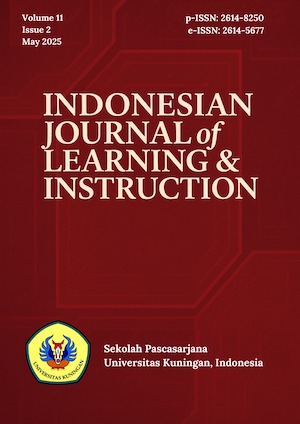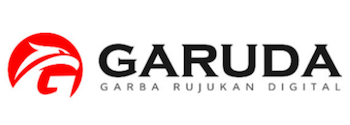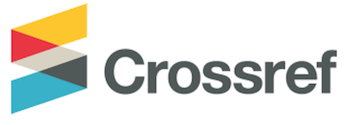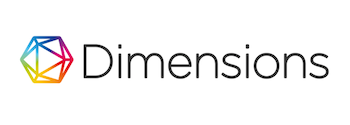
Submissions
Submission Preparation Checklist
As part of the submission process, authors are required to check off their submission's compliance with all of the following items, and submissions may be returned to authors that do not adhere to these guidelines.- The submission has not been previously published, nor is it before another journal for consideration (or an explanation has been provided in Comments to the Editor).
- The submission file is in OpenOffice, Microsoft Word, RTF, or WordPerfect document file format.
- Where available, URLs for the references have been provided.
- The text is single-spaced; uses a 12-point font; employs italics, rather than underlining (except with URL addresses); and all illustrations, figures, and tables are placed within the text at the appropriate points, rather than at the end.
- The text adheres to the stylistic and bibliographic requirements outlined in the Author Guidelines, which is found in About the Journal.
- If submitting to a peer-reviewed section of the journal, the instructions in Ensuring a Blind Review have been followed.
Author Guidelines
General Author Guidelines
- Generally, you may register as author with this journal and submit your manuscript online.
Online Submissions
Already have a Username/Password for Indonesian Journal of Learning and Instruction (IJLI)? Go to Login
Need a Username/Password? Go to Registration
Registration and login are required to submit items online and to check the status of current submissions.
Alternatively, your manuscript is sent to IJLI editors:indonesiaeflj@gmail.com
- All manuscripts must be submitted to IJLI Editorial Office by Online Submission at where author register as Author and/or offered as Reviewer by online. If authors have any problems on the online submission, please contact Editorial Office at the email: indonesiaeflj@gmail.com.
- The following documents should accompany the manuscripts submitted by online through online submission interface (as supplementary files):
- Signed Copyright Transfer Agreement (CTA) form originally (scan the document after signed)
- A covering letter, outlines the basic findings of the paper and their significance.
Three types of manuscripts are acceptable for publication: research-based paper and critical review- based paper.
Reviewing of manuscripts
- Every submitted paper is independently reviewed by at least two peer reviewers. Decision for publication, amendment, or rejection is based upon their reports/ recommendation. If two or more reviewers consider a manuscript unsuitable for publication in this journal, a statement explaining the basis for the decision will be sent to the authors within three months of the submission date.
Revision of manuscripts
Manuscripts sent back to the authors for revision should be returned to the editor without delay. Revised manuscripts can be sent to editorial office through the Online Submission Interface. The revised manuscripts returned later than three months will be considered as new submissions.
Publication and Authorship Ethics
- Authors should observe the following codes of conduct when they intend to submit/publish a paper.
- Authors are required to provide a complete list of references cited in their paper.
- If authors received any financial support to conduct the research that is reported in the submitted paper, they should provide the information.
- IJLI cannot bear plagiarism and fraudulent data in any paper. It has a strict policy against plagiarism, which is checked through two methods: reviewer check and plagiarism prevention tool (iThenticate). All submissions will be checked before being sent to reviewers.
- IJLI manuscripts are reviewed by a minimum of two reviewers.
- In case of presence of any fraudulent information in an article, its authors will be responsible for providing retractions or corrections of mistakes.
- It is strictly prohibited to publish the same research in more than one journal.
Guide for authors
- Authors should note that Manuscripts which are going to be submitted to IJLI should be according to the journal Manuscript Submission Guideline.
Authors are required to download Cover Letter and Declaration Form, fill it in, and submit it to the journal via email.
The submission must not have been previously published, nor should it be under consideration for  publication elsewhere. We also have a strict policy against plagiarism. The plagiarism is checked through two methods: reviewer check and plagiarism prevention tool (iThenticate). All submissions will be checked by online software before being sent to reviewers.
Author Fee (Page Charge).
- IJLI is an open access international journal. Since manuscript submission year 2012, Authors should pay some processing fees (US$150.00).
- Readers can read and download any full-text articles for free of charge. Authors may also pay some fees for the hardcopies and off print with some eligible rates.
General Rules
- Language: Please write your text in good English (American or British usage is accepted, but not a mixture of both); decimal points (not commas).
- Length of paper: 5.000-6.000 words are preferred.
Manuscript Preparation Guidelines
General Organization of Paper
The paper will be published in IJLI journal after peer-reviewed process and decided accepted by Editor. The final paper layout will be reproduced by Editorial Office of BCREC journal. The final paper layout in PDF type, known as Uncorrected Proof should be corrected by Author. The final corrected proof will be published first in Article In Press pre-issue.
Manuscript content should be organized in the following order: Title; Authors Name; Authors Affiliation; Abstract; Keywords; Introduction; Method; Findings and Discussion; Conclusions; Acknowledgements; and References. Manuscript document submitted to this journal (in one MS Word or PDF file) should be arranged as follow:
1. Body text of manuscript article (from Title to References, without tables and figures)
2. Figure Captions and Table Captions
3. Figures (one figure per page)
4. Tables (one table per page)
Please include Covering Letter in a separated document file containing your summary of scientific finding and uploaded in Supplementary Files.
Section Headings
Three levels of heading are allowed as follows:
- Level 1 (Heading1 format) - 12pt, Times bold, left justified
- Level 2 (Heading2 format) - 12pt, Times bold, left justified
- Level 3 (Heading3 format) - 12pt, Times bold italic, left justified
Body Text
The body of the text is a set of body text paragraphs defined as follows:
- 12pt Times New Roman
- One-half space, defined as 12pt
- Spacing after the heading is 3pt
- Spacing before the new heading is 12pt
- Indentation for the first line is 1 cm.
Bullets
There are two levels of allowed bulleting:
- This is the first bullet level
- This is a sub-bullet level
Enumerated Lists
Lists are sequentially numbers as follows:
- Spacing before the start of list is 3pt
- Spacing after the end of list is 3pt
Tables
- Tables are sequentially numbered with the table title and number above the table. Tables should be centered in the column OR on the page. Tables should be followed by a line space (12pt). Elements of a table should be single-spaced, however double spacing can be used to show groupings of data or to separate parts within the table. Â Table headings should be in 10pt bold. Tables are referred in the text by
- the table number. eg: Table 1. Do not show vertical line in the table. There is only horizontal line should
- be shown within the table.
Figures
Figures are sequentially numbered commencing at 1 with the figure title and number below the figure as shown in Figure 1. Detailed recommendations for figures are as follows:
- Ensure that figures are clear and legible with typed letterings.
- Black & white or colored figures are allowed.
- If a figure spans two columns, it should be placed at the top or bottom of a page.
Hard copy illustrations should, preferably, be scanned and included in the electronic version of the submission in an appropriate format as follows:
- BMP - Microsoft bitmap file
- WMF - Windows Metafile Format
- EPS - Encapsulated Postscript
- If figures cannot be scanned, the original should be placed in its location within the manuscript using wax or colorless glue.
- The following files are permissible:
- Microsoft Graph
- Microsoft Draw
Equations
Equations should be numbered serially within parentheses as shown in Equation (1). Equation should be prepared using MS Equation Editor (not in image format). The equation number is to be placed at the extreme right side.
Units, Abbreviations and Symbols
Metric units are preferred. Define abbreviations and symbols at the first time as they are introduced in the text.
Manuscript Heading, Font, and Spacing
- Manuscript should be typed using word processors (Microsoft Word or Open Office) software. The font used throughout the paper is Times New Roman. The paper size is A4 (i.e., 210 x 297 mm), two-column format (i.e., 85 mm each) with a 2.5 cm margin at the top, a 2.5 cm margin at the bottom, 2.5 cm margin on the left, and 2 cm margin on the right. Lines are one-half spaced, justified. Page numbers should be included in the text located in footer section of each page. Use of pronouns such as I, we etc. is to be avoided.
- Manuscript submitted to this journal should follow the heading below, except for the critical review article: Title; Authors Name; Authors Affiliation; Abstract; Keywords; Introduction; Method; Findings and Discussion; Conclusions; Acknowledgements; and References.
Paper Title
- This is your opportunity to attract the reader’s attention. Remember that readers are the potential authors who will cite your article. Identify the main issue of the paper. Begin with the subject of the paper. The  title should be accurate, unambiguous, specific, and  complete. Do not contain infrequently-used abbreviations. The title of the paper should be in 16pt bold Times New Roman and be centered. The title should have 0 pts space above and 12 pts below.
Authors Name and Affiliations
- Write Author(s) names without title and professional positions such as Prof, Dr, Production Manager, etc. Do not abbreviate your last/family name. Always give your First and Last names. Write clear affiliation of all Authors. Affiliation includes: name of department/unit, (faculty), name of university, address, country.
- Please indicate Corresponding Author (include email address) by adding asterisk (*) in superscript behind the name.
- Author names should be in 12 pt Times Roman bold with 12 pts above and 12 pts below. Author addresses are superscripted by numerals and centered over both columns of manuscripts. Author affiliations should be in 12 pt Times Roman italic. The body of the text should commence 2 lines (24 points) below the last address.
Abstract and Keywords
- Abstract should stand alone, means that no citation in abstract. Consider it the advertisement of your article. Abstract should tell the prospective reader what you did and highlight the key findings. Avoid using technical jargon and uncommon abbreviations. You must be accurate, brief, clear and specific. Use words which reflect the precise meaning, Abstract should be precise and honest. Please follow word limitations (100-300 words).
- Keywords are the labels of your manuscript and critical to correct indexing and searching. Therefore the keywords should represent the content and highlight of your article. Use only those abbreviations that are firmly established in the field. e.g. DNA. Each words/phrase in keyword should be separated by a semicolon (;), not a comma (,).
Introduction
- In Introduction, Authors should state the objectives of the work at the end of introduction section. Before the objective, Authors should provide an adequate background, and very short literature survey in order to record the existing solutions/method, to show which is the best of previous researches, to show the  main limitation of  the previous researches, to show what do you hope to achieve (to solve the limitation), and to show the scientific merit or novelties of the paper. Avoid a detailed literature survey or a summary of the results.
Method
- Method should make readers be able to reproduce the experiment. Provide sufficient detail to allow the work to be reproduced. Methods already published should be indicated by a reference: only relevant modifications should be described. Do not repeat the details of established methods.
Findings and Discussion
- Results should be clear and concise. The results should summarize (scientific) findings rather than providing data in great detail. Please highlight differences between your results or findings and the previous publications by other researchers.
- The discussion should explore the significance of the results of the work, not repeat them. A combined Results and Discussion section is often appropriate. Avoid extensive citations and discussion of published literature. In discussion, it is the most important section of your article. Here you get the chance to sell your data. Make the discussion corresponding to the results, but do not reiterate the results. Often should begin with a brief summary of the main scientific findings (not experimental results). The following components should be covered in discussion: How do your results relate to the original question or objectives outlined in the Introduction section (what)? Do you provide interpretation scientifically for each of your results or findings presented (why)?
- Are your results consistent with what other investigators have reported (what else)? Or are there any differences?
Conclusions
- Conclusions should answer the objectives of research. Tells how your work advances the field from the present state of knowledge. Without clear Conclusions, reviewers and readers will find it difficult to judge the work, and whether or not it merits publication in the journal. Do not repeat the Abstract, or just list experimental results. Provide a clear scientific justification for your work, and indicate possible applications and extensions. You should also suggest future experiments and/or point out those that are underway.
Acknowledgement
- Recognize those who helped in the research, especially funding supporter of your research. Include individuals who have assisted you in your study: Advisors, Financial supporters, or may other supporter i.e. Proofreaders, Typists, and Suppliers who may have given materials.
References
- Cite the main scientific publications on which your work is based. Cite only items that you have read. Do not inflate the manuscript with too many references. Avoid excessive self-citations. Avoid excessive citations of publications from the same region.
The references in your paper should be formatted according to the APA 7th edition style. This is the standard format used in academic publications and is crucial for ensuring consistency and organization in your referencing.
The minimum required number of references for your paper is 50, and they should ideally cover the latest five years (2019-2024) to ensure the inclusion of the most up-to-date research.
- Please use Reference Manager Applications like EndNote, Mendeley, Zotero, etc. Use other published articles in the same journal as models.
- All publications cited in the text should be included as a list of references. References are sequentially numbered as they appear in the text. Reference numbers are indicated in square brackets. Please ensure that every reference cited in the text is also present in the reference list (and vice versa). Any references cited in the abstract must be given in full. Unpublished results and personal communications are not recommended in the reference list, but may be mentioned in the text. If these references are included in the reference list they should follow the standard reference style of the journal and should include a substitution of the publication date with either Unpublished results or Personal communication. Citation of a reference as 'in press' implies that the item has been accepted for publication.
- As a minimum, the full URL should be given and the date when the reference was last accessed. Any further information, if known (DOI, author names, dates, reference to a source publication, etc.), should also be given. Web references can be listed separately (e.g., after the reference list) under a different heading if desired, or can be included in the reference list.
Examples:
Reference to a journal publication:
White, R. (1997). Back channelling, repair, pausing, and private speech. Applied Linguistics 18(3), 314-344.
Reference to a book:
Hopper, R. (1992). Telephone conversation. Indiana University Press.
Reference to a chapter in an edited book:
Mettam, G. R., & Adams, L. B. (1994). How to prepare an electronic version of your article. In B. S. Jones, & R. Z. Smith (Eds.), Introduction to the electronic age (pp. 281-304). New York: E-Publishing Inc.
Reference to an unpublished thesis/dissertation:
Ohira, K. (1998). Have you changed? Pragmatic transfer of back-channel behavior by Japanese bilingual speakers. (Thesis doctoral). Urbana-Champaign, Illinois: University of Illinois.
Reference to a web source:
Smith, J. (1999). One of Volvo's core values. [Online] Retrieved from http://www.volvo.com/environment/index.htm (July 7, 1999).








